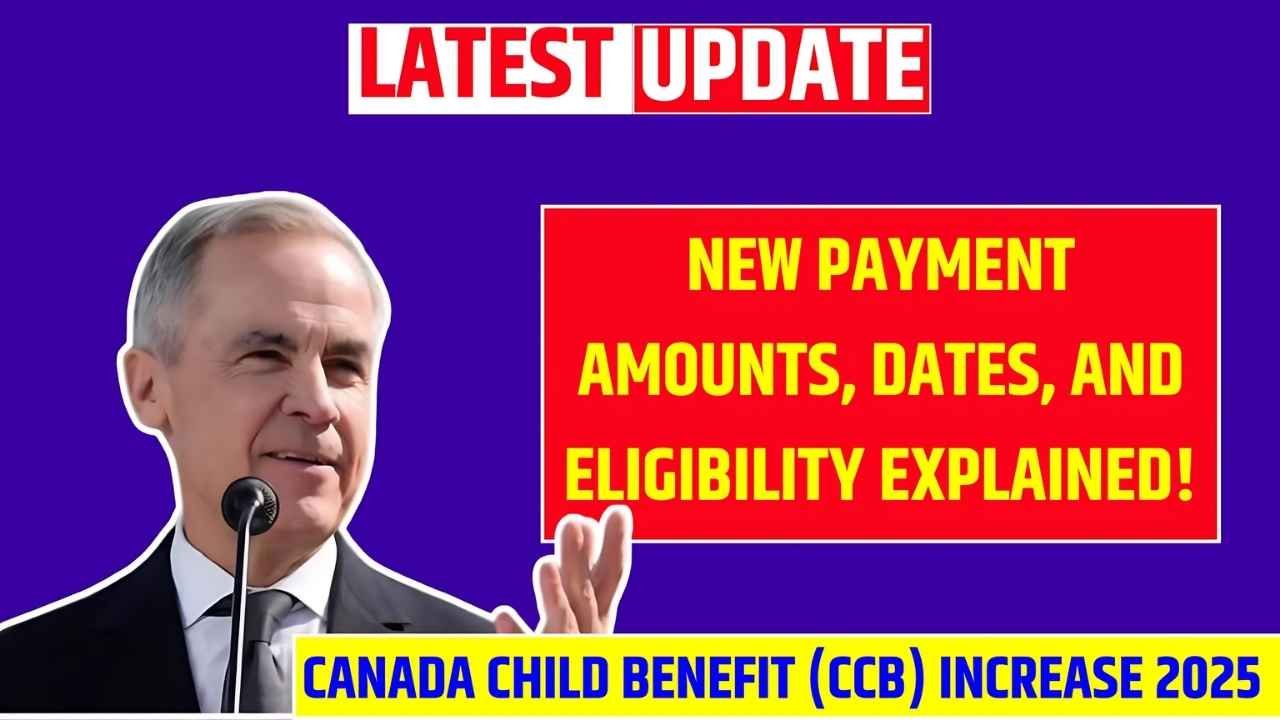Canada Child Benefit (CCB) Increase 2025: The Canada Child Benefit (CCB) is one of the most important financial support programs for Canadian families. It offers a monthly, tax-free payment to help with the cost of raising children under the age of 18. Managed by the Canada Revenue Agency (CRA), this benefit is adjusted every year in July to reflect inflation and changing economic needs.
In 2025, the government has increased the CCB by 2.7% to help families better cope with the rising costs of living. This increase will benefit millions of families across the country. In this article, we will explore how much the benefit has increased, who is eligible, when the payments will be made, and what families should do to ensure they receive the correct amount.
CCB Payment Increase in 2025
Starting from July 2025, the CCB has increased by 2.7%, based on the Consumer Price Index (CPI). This is a regular adjustment to help families manage expenses like food, housing, education, and childcare. The updated amounts apply from July 2025 to June 2026.
This change ensures that the value of the CCB keeps up with inflation, providing real support for low- and middle-income families. It’s part of the government’s broader strategy to reduce child poverty and support economic stability for households with children.
New Maximum CCB Amounts
As of July 2025, the maximum annual CCB payments are:
- $7,997 per child under 6 (approximately $666.41/month)
- $6,748 per child aged 6 to 17 (approximately $562.33/month)
These amounts represent an increase of $210 for younger children and $178 for older children compared to last year. However, not every family receives the maximum amount. The actual payment depends on your Adjusted Family Net Income (AFNI) from the previous tax year (2024).
Families with lower income receive the full amount, while those with higher income see a gradual reduction based on CRA’s benefit formula.
Eligibility for the CCB
To qualify for the Canada Child Benefit, families must meet the following criteria:
- You must live with a child under 18 years of age
- You must be primarily responsible for the care of the child
- You must be a Canadian resident for tax purposes
- You and your spouse/common-law partner must have filed your 2024 tax return
If you are new to Canada or recently gained custody of a child, you can still apply by submitting the proper forms and documents to the CRA. You may also be eligible if you are a legal guardian or a grandparent caring for the child full-time.
Special rules apply in shared custody situations, where each parent may receive 50% of the payment.
CCB Payment Dates for 2025
CCB payments are issued every month, usually on or around the 20th of the month. If the date falls on a weekend or public holiday, you may receive your payment a bit earlier. Here are the CCB payment dates for the rest of 2025:
- July 18, 2025
- August 20, 2025
- September 19, 2025
- October 18, 2025
- November 20, 2025
- December 12, 2025
Payments are usually made via direct deposit, so make sure your banking details are current on your CRA account. If you receive cheques by mail, delivery may take a few more days.
You can check your payment status, history, and amount by logging in to CRA My Account or using the CRA mobile app.
What You Should Do Now
If you’re already receiving the CCB, you do not need to reapply. However, to continue receiving the correct amount:
- Make sure you and your partner filed your 2024 income tax return
- Update your address, marital status, or custody arrangement if it changed recently
- Sign up for direct deposit to avoid payment delays
- Check your CRA account to confirm your July payment reflects the increase
If you have a new child or have never received CCB before, you need to apply through your CRA My Account or fill out Form RC66. The process is straightforward, but it’s important to provide accurate information to avoid any delays or adjustments later.
Also, if you think you’re receiving the wrong amount, you can use the Child and Family Benefits Calculator on the CRA website to estimate your eligible payment based on your income and number of children.




